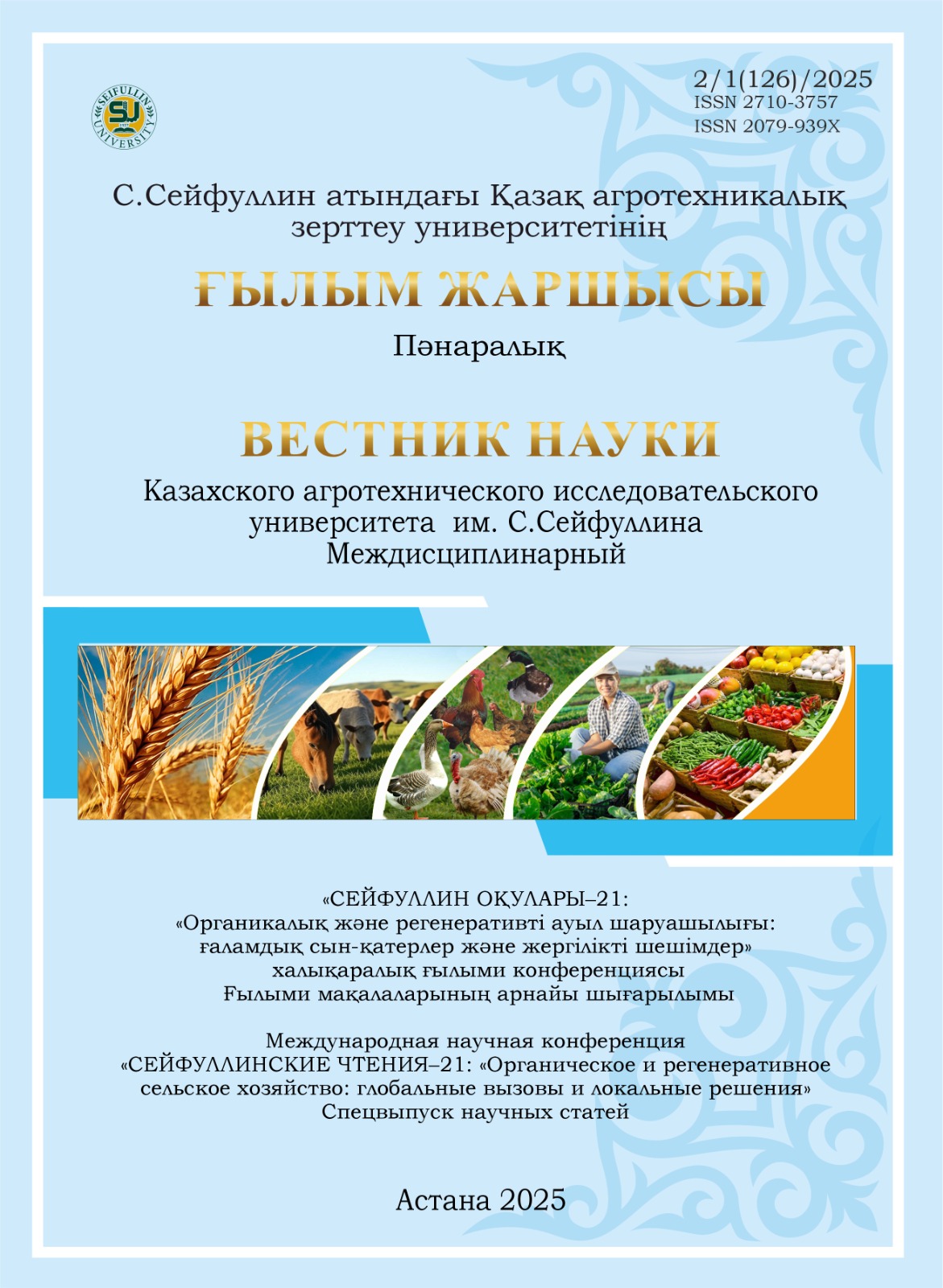Effectiveness of biological agents in controlling the Colorado potato beetle on potato plantations
DOI:
https://doi.org/10.51452/kazatu.2025.2/1(126).1921Keywords:
potato; сolorado potato beetle; рodisus; biological efficiency.Abstract
Background and Aim. Effective protection of plants from pests plays a key role in increasing the yield of starch containing crops such as potatoes. One of the most dangerous and widespread pests is the Colorado potato beetle (Leptinotarsa decemlineata Say, 1824). This phytophagous insect has a high ability to adapt to various climatic conditions and, depending on the region, can develop 1-3 generations during the growing season. The main method of controlling the pest population is the use of chemical insecticides. However, their use is associated with a number of negative consequences, including adverse impacts on the ecological environment, the death of beneficial insects and other organisms, as well as the rapid development of resistance in pests. One of the advantages of biological pest control compared to chemical methods is the ability of natural enemies to reproduce and disperse, ensuring long-term control of harmful organisms. The use of entomophagous insects bred in biological laboratories allows maintaining pest populations at economically insignificant levels. Interacting with other components of the agrocenosis, these organisms act as seasonal bioregulators of pest populations. As a result, ecological equilibrium is established much faster than in the absence of biocenotic regulation. Thus, biological protection becomes not only manageable but also active. This article presents the results of a study on the use of biological plant protection products in the fight against the Colorado potato beetle (Leptinotarsa decemlineata Say) in potato crops. The main problems associated with the increasing population of this pest and the negative consequences of chemical pesticide use, such as ecosystem pollution, soil and water contamination, and the development of pest resistance, are discussed. The advantages of using biological products and entomophages as an environmentally safe alternative to chemical pesticides are evaluated. The article also analyzes the effectiveness of biological preparations in reducing the population of the Colorado potato beetle and their potential to improve crop sustainability.
Materials and Methods. The predator Podisus maculiventris Say (Podisus), introduced in 2015, was used in the experiments. In laboratory conditions, the bugs were reared at 26 ± 1 °C, 70-75% humidity, and a 6-hour photoperiod. In field conditions, the numbers of Colorado potato beetle (eggs, larvae, adults) and Podisus (larvae and adults) were recorded per potato plant. The biopreparation Aktarofit 1.8 was applied at a rate of 0.2 L/ha, followed the next day by the release of Podisus at a rate of 25,000 individuals/ha. Observations were conducted on days 3, 7, and 14.
Results. Research Progress. Field studies were conducted in 2024 at the experimental site of the regional branch "Kainar" of LLP "KazNIIZiKR" (Almaty region, Karasai district) on potato plantations.
Conclusion. The combined use of the biopreparation Aktarofit 1.8 with the predator Podisus demonstrated high biological efficiency – 83.6% on day 3 and 87.2% on day 7 after treatment. This integrated approach improved plant protection and reduced reliance on chemical pesticides, contributing to the ecological sustainability of agroecosystems. Future research will focus on precision delivery of bioagents using UAVs.

